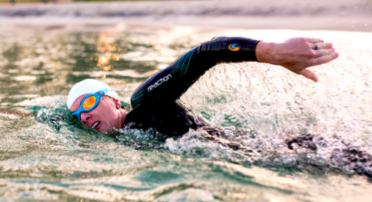Hillingdon Triathletes - Safety Matters
Many of you are seasoned triathletes and, as such, experienced open water swimmers
With pool sessions limited, and currently not available to us as a Club, we have put together a few safety points to consider for all - particularly for those new to open water swimming
These are general points taken from documents and guidance notes covering open water swimming, they are not specific to any particular venue as club members are swimming at a variety of locations
- Use your own, clearly marked equipment and only take the minimum amount of equipment that you need to participate safely
- Wetsuits provide insulation against the cold, improving cold water tolerance and extending the time a swimmer can remain (comfortably) in the water
- They also increase buoyancy so that, even when static, swimmers float
- Wetsuits are recommended at all times, unless the water is very warm
- The use of a tow float is recommended at all times, and especially if a wetsuit is not worn
- A tow float is a brightly coloured, inflatable bag that is attached to the swimmer via a line/waistband
- The benefits of a tow float include:
- Increased visibility of the swimmer
- It can make it easier to identify you – making recovery easier
- They provide buoyant support should a swimmer need to rest or require assistance
- Valuables can also be kept in a tow float if there is nowhere safe to keep them at the venue
- It is best to always swim with a buddy, so if one person gets into difficulties then the other person can raise the alarm
- Goggles are recommended as they allow you to see underwater obstructions and protect the eyes
- A brightly coloured swim cap can help with being seen by other swimmers, passing boats and safety spotters at organised venues
- Nose clips can keep pollen and other irritants out of the nose, and many people like to wear these
- Use toilet facilities at home before you leave
- Wash your hands with soap and water for at least 20 seconds before leaving home to go to the venue (or use an alcohol gel if washing hands is not possible)
- Arrive changed and ready to participate
- When open water swimming, cover cuts and abrasions, however minor, with sticking plasters
- Don’t swim if you have deep cuts or open wounds as the infection risk is higher, including the risk of contracting Weil’s disease
- Different types of weather can lead to additional risks that you need to be aware of
- In hot weather, there can be a significant difference between the air and water temperature
- When open water swimming, the colder the water and air temperature, the quicker you will cool down and the colder it is, the less time you should spend in the water
- It is important to consider underfoot conditions leading to your entry point – to avoid risks of cuts and grazes
- Try to wear footwear as close as possible to the water’s edge and look out for sharp stones or broken glass
- To acclimatise it is recommend that you:
- Immerse yourself slowly
- Put your face in the water
- Take some deep breaths
- Gently tread water slowly moving your legs and arms
- If you become nervous or uncomfortable, it is recommended that you roll on to your back and float and breathe deeply until you regain control - your wetsuit and your tow float will help keep you buoyant
- When you return home shower in fresh water at the earliest opportunity - this will remove all microbes, many of which are able to survive on the skin surface for long periods
- Rinse and wash all your kit in fresh water before drying thoroughly
- Wetsuit
- Goggles
- Tow float
- Water bottle
- Swimming costume
- If you feel ill seek medical advice by calling 111 – this includes developing rashes for up to three weeks following your swim
- Highlight that you have been swimming in open water and tell the operator the location/venue that you swan in
